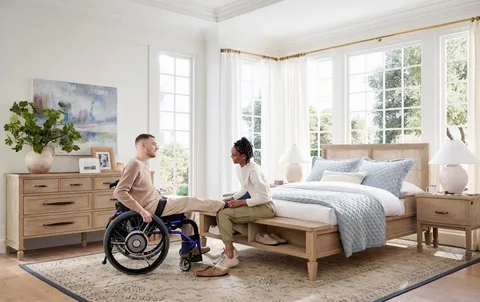Making a home more accessible is about more than just physical changes—it’s about creating comfort, independence, and safety for those with mobility challenges. Renovations can feel overwhelming at first, but with proper planning, they can transform a living space into a welcoming environment for every stage of life. From entrances and hallways to bathrooms and stairways, accessibility requires thoughtful choices. Products like reconditioned curved stairlifts can provide solutions that are both functional and cost-effective.
Start with an Accessibility Assessment
Before making any renovations, take time to evaluate how the space is currently used. Identify barriers that make movement difficult, such as narrow hallways, uneven flooring, or steep staircases. Consulting with an occupational therapist or accessibility specialist can provide valuable insights into what changes will have the greatest impact. A clear assessment ensures your renovation plan addresses both immediate needs and potential future challenges.
Entrances and Exits
One of the first areas to evaluate is how easily someone can enter and exit the home. Stairs at entryways may require ramps or platform lifts. Doorways may need widening to accommodate wheelchairs or walkers. Adding lever-style handles instead of round knobs can make opening doors easier for individuals with limited hand strength. These small but essential modifications set the tone for a more accessible home.
Flooring Choices
Flooring can make a huge difference in accessibility. Thick carpeting may pose a challenge for wheelchairs or walkers, while slick surfaces can increase the risk of falls. Choose low-pile carpet, slip-resistant tile, or vinyl flooring for safer movement. Transitions between rooms should be level or have beveled strips to prevent tripping hazards. Investing in safe flooring not only improves accessibility but also creates a more comfortable environment for everyone.
Bathroom Renovations
Bathrooms are often the most challenging rooms when it comes to accessibility. Consider walk-in showers with grab bars, built-in seating, and handheld showerheads. Raised toilets and widened doorways also add convenience. Non-slip flooring reduces fall risks, and strategically placed lighting ensures safe use at any time of day. These renovations may require professional installation but are essential for long-term safety and independence, providing peace of mind for both residents and caregivers while supporting dignity, comfort, and easier daily routines.
Kitchen Modifications
Kitchens should be both functional and safe. Lowering countertops, adjusting cabinet heights, and installing pull-out shelving make it easier for individuals to prepare meals independently. Lever-style faucets and accessible appliances, such as side-opening ovens or refrigerators with pull-out drawers, create a more user-friendly environment. Designing a kitchen with accessibility in mind promotes independence while still maintaining style and functionality.
Stairway Solutions
For multi-level homes, stairways often present the greatest challenge. Renovating to add a bedroom or bathroom on the main level is one option, but sometimes that isn’t feasible. In those cases, installing a stairlift provides a practical solution. For homes with curved or winding staircases, reconditioned curved stairlifts offer a reliable and affordable option. These devices allow safe travel between floors without major structural changes, helping residents stay in the home they love.
Lighting and Visibility
Proper lighting is an often-overlooked element of accessibility. Bright, even lighting helps prevent accidents, especially in hallways, stairwells, and bathrooms. Motion-sensor lights can be added for convenience, and rocker switches are easier to operate than standard toggle switches. Good lighting doesn’t just improve safety—it also creates a warmer, more inviting space for everyone, reduces eye strain, supports aging vision, and ensures that critical areas remain visible during nighttime or emergencies when clear pathways and quick responses are most important.
Financial Considerations
Accessibility renovations can be significant investments. The good news is that many solutions, like stairlifts or grab bars, don’t require full-scale remodeling. Choosing reconditioned equipment, such as stairlifts, helps manage costs while still delivering safety and reliability. Some insurance programs or government grants may cover portions of accessibility upgrades. Planning your budget carefully ensures you can prioritize the most important changes without unnecessary financial strain.
Future-Proofing Your Home
Accessibility renovations shouldn’t just solve today’s needs—they should anticipate tomorrow’s. Even if mobility isn’t a current issue, aging-in-place planning ensures the home remains comfortable and safe long term. Thinking ahead about potential challenges, from vision loss to reduced mobility, allows you to create a home that adapts gracefully over time.
Why Accessibility Renovations Matter
At the heart of accessibility renovations is dignity. Creating a home that allows people to move freely, perform daily activities independently, and remain safe in familiar surroundings enhances quality of life. Renovations are more than just construction projects—they are investments in comfort, security, and peace of mind.
A thoughtfully planned renovation ensures your home isn’t just functional, but welcoming for everyone. From widened doorways and safer bathrooms to the convenience of reconditioned curved stairlifts, accessibility upgrades make life easier, safer, and more enjoyable—today and for years to come.



